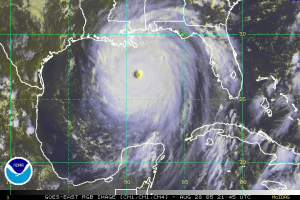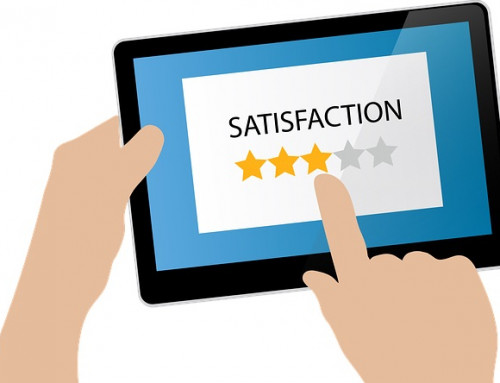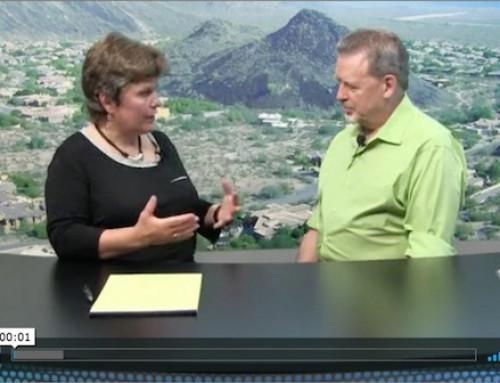
Your untapped power lies in being able to find and tell the story hiding in your data, and using that story effectively. Finding and articulating that story proves to be part art and part science. The science lies in interpreting data accurately, ensuring that you find the story but never reach or even approach conclusions that exceed the limitations of the data. But there is an art to finding the story that lies within the numbers, skill that comes from both expertise and experience. The art lies in taking what the data say—with complete accuracy—and using that to articulate what they mean, separating the “forest from the trees” to tell a compelling story.
Caution! Doing that is not easy. Being able to really dig into data and understand what they mean, without overstating or understating the implications, takes science. But to use data effectively—internally, to orient your customer service and ensure continuous process improvement, and externally in your marketing—you must tell the story that will move beyond the numbers to impel people to action.
How do you find and tell the story in your data? The first step is to understand that numbers, in and of themselves, can’t tell the story for you. Here’s an example.
After Hurricane Katrina hit south Louisiana, I served on the Inter-Agency Performance Evaluation Task Force (IPET) for the US Army Corps of Engineers, on one of ten discipline-specific teams tasked with telling the story of the social consequences of the disaster. As a result of the work we did, I spent countless hours on the phone with reporters from inside and outside the US, who wanted to understand better what happened.
One question popped up repeatedly: Why didn’t more people leave??
The answer to that question was actually pretty simple. It lay primarily in two statistics: The number of New Orleanians who lacked cars and the number who were caring for the aged and the infirm. Those numbers were large and I cited them repeatedly.
But to make people care about what happened, to make them understand why people became trapped, I had to do much more than just cite cold statistics. I had to use the numbers to tell a story—an accurate story, a true story that doesn’t overreach the data, the story of what happened to those people who were left in New Orleans to suffer. So I began to unpack the numbers by explaining that thousands of people—many of whom were poor—had no cars. Thousands of others were caring for the ill or elderly and for them, transporting the people in their care proved difficult, if not impossible.
Add to those facts the reality that the “run-up” to Katrina was fast, making the time for preparation and evacuation was unusually short, and the situation becomes still more complex. Securing shelter and navigating out of the city often proved challenging, even for people with resources. Here’s my story to illustrate. I walked into our house in Baton Rouge on the Friday afternoon before Katrina, found my husband sitting at the computer, and asked what he was doing. He said, “making reservations.” “For what?” “For Katrina. It’s headed this way.” We studied the effects of hurricanes, we were part of the LSU Hurricane Center, yet up until that moment, I was completely unaware that this Category 5 storm (Katrina weakened to a Category 3 by its Gulf Coast landfall) now held New Orleans in its sights.

Hurricane Katrina, as pictured in the Gulf of Mexico at on August 28, 2005, via NOAA satellite imagery. [image source: Wikimedia Commons/NOAA National Oceanic and Atmospheric Administration]
For those who didn’t have the options and resources we had, the situation became very bleak, very quickly. The fact that people became trapped, either because they lacked transportation and had no way out or because they wouldn’t leave behind those for whom they were caring, provides the core of the story behind the people evacuated to Houston and Idaho and other corners of the country, the story behind the horror in the Superdome and the Convention Center, the story behind the communities destroyed and the hundreds of lives lost in the storm. In these paragraphs, I gave you the data—but I wove them into a story about what happened.
Every business has a story. Your opportunity lies in being able to gather and understand data well, then use those data to tell your story effectively.
You must tell your story internally, to your team, ensuring that they know your customers so well that they understand exactly how to serve your customers well. That’s how you motivate them to make your Concierge Customer Service system a success.
You must share your story with your customers, so they understand how well you’re serving them and what benefits you provide to them. That’s how you motivate your customers, and particularly your best customers, to continue doing business with you.
You must tell your story to those who aren’t yet customers, in your content and in your marketing, to convey just how well you serve your customers and how you can solve your prospects’ biggest problems. That’s how you can attract more customers like the ones you serve now.
Here’s the great news: Almost none of your competitors can do that.
Not one bit.
Not even close.
They don’t survey their customers.
Those that might, do so badly.
Even those who collect decent data from their customers typically don’t know how to use it.
That’s why you can win. You can dominate . . . You can take the lead and stay there.
 This blog post is based off material from my book with Randy MacLean:
This blog post is based off material from my book with Randy MacLean:
“YOU CAN’T SERVE THEM WELL IF YOU DON’T KNOW THEM WELL: Capturing and Captivating Customers with Concierge Customer Service™”
You can get the first two chapters for FREE here.
If you’d like a full copy of the entire book, you can get it here.
 Dr. Jeanne Hurlbert, President of Hurlbert Consulting is an expert in sociology and survey research. After spending more than 25 years in academia, she now uses her extensive behavioral science expertise to help companies like yours distinguish yourselves through customer service. What sets her approach to customer service apart is that she begins by helping companies meld research and marketing to find out:
Dr. Jeanne Hurlbert, President of Hurlbert Consulting is an expert in sociology and survey research. After spending more than 25 years in academia, she now uses her extensive behavioral science expertise to help companies like yours distinguish yourselves through customer service. What sets her approach to customer service apart is that she begins by helping companies meld research and marketing to find out:
(a) exactly what their customers want and
(b) exactly how well they’re succeeding in giving customers what they want.
You can schedule a consult with her by going to www.ConciergeCustomerService.com; you can call her at 888-590-9677; or send an email here. And, if you’d like to complete her complimentary assessment to see how well you’re doing in knowing and serving your customers well, just go to www.FixYourService.com.





